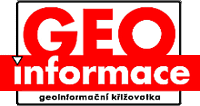ESA Navigation 
zdroje zpráv:
Galileo lifts off
17.12.2015 13:00
Replay of liftoff of Soyuz carrying Galileo satellites 11 and 12, at 11:51 GMT, from Europe’s Spaceport in French Guiana
Watch Galileo launch
16.12.2015 15:10
See the launch of Galileo satellites 11 and 12 on Thursday 17 December. Streaming starts at 11:31 GMT (12:31 CET)
Watch Galileo launch
16.12.2015 15:10
See the launch of Galileo satellites 11 and 12 on Thursday 17 December. Streaming starts at 11:30 GMT (12:30 CET)
Galileos in the zone for launch
15.12.2015 16:42
Galileos 11 and 12 are on the launch pad, attached to the top of their Soyuz rocket in readiness for this week’s launch.
Galileos in the zone for launch
15.12.2015 16:42
Galileos 11 and 12 are on the launch pad, attached to the top of their Soyuz rocket in readiness for this week’s launch.
Galileo satellites handed over to operator
25.9.2015 10:55
Europe’s latest pair of Galileo satellites has passed its initial check out in space, allowing control to be handed over to the main control centre and join the growing fleet.
Navipedia
20.9.2013 14:26
Visit Navipedia, the web’s leading resource on satellite navigation: http://www.navipedia.net
Navipedia
20.9.2013 14:26
Visit Navipedia, the web’s leading resource on satellite navigation: http://www.navipedia.net
© geoinformace.cz CMS Toolkit

















